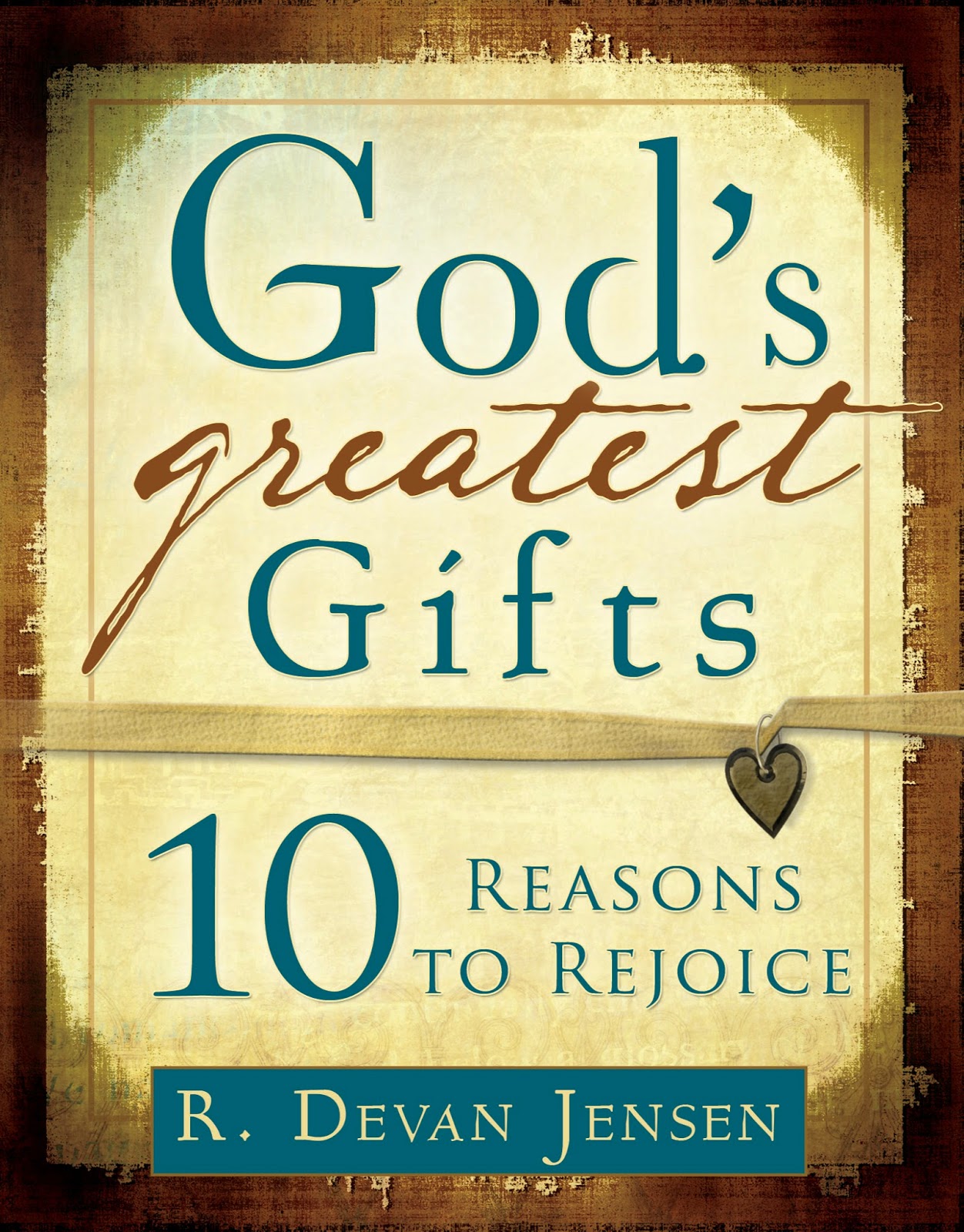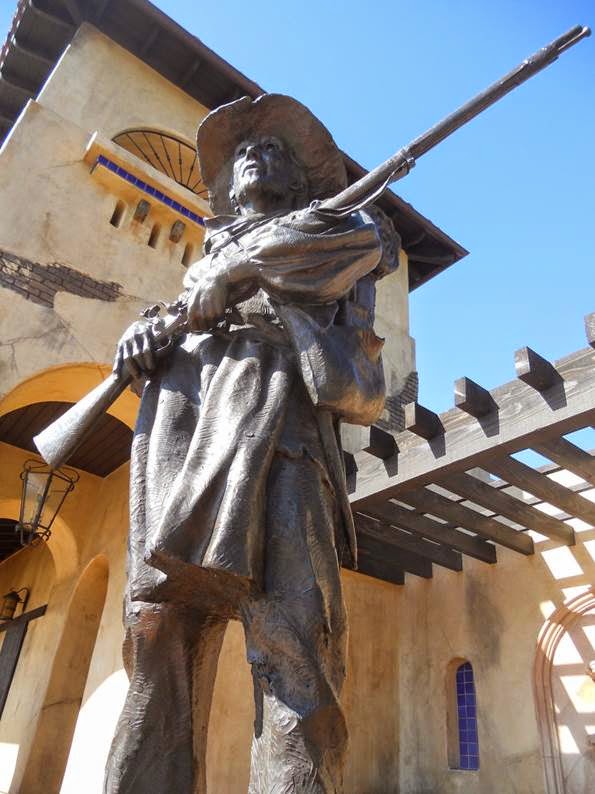All of the gifts of God are supernal,
surpassing any gifts we might exchange on earth. Still, one gift surpasses all
the rest. This ultimate gift is called by the Lord Himself “the greatest of all
the gifts of God” (D&C 14:7; see also 1 Nephi 15:36 ). In fact, this gift encompasses the rest
of God’s gifts because it is the central purpose of the plan of happiness. This
gift is the gift of eternal life, which is the central purpose of the plan of
happiness.
Eternal
life means knowing the Father and the Son and becoming one with them (see John
17:3, 21). It means dwelling in God’s presence as an eternal family in eternal
glory (see D&C 130:2). It means becoming even as God is and receiving all
that He has—“glory, and salvation, and honor, and immortality, and eternal
life; kingdoms, principalities, and powers!” (D&C 128:23). It means becoming
kings and queens, priests and priestesses—serving under the direction of our
Father in Heaven to accomplish His work and glory, namely, “to bring to pass
the immortality and eternal life of man” (Moses 1:39).
Eternal
life means much more than living forever, for the Lord calls that state
“immortality,” a gift freely given to all people through the magnificent power
of the Resurrection. Eternal life, however, is “the greatest of all the gifts
of God,” writes Elder McConkie, “for it is the kind, status, type, and quality
of life that God himself enjoys. Thus those who gain eternal life receive
exaltation; they are sons of God, joint-heirs with Christ, members of the
Church of the Firstborn; they overcome all things, have all power, and receive
the fulness of the Father.”[i]
 |
| Philo Dibble described Joseph Smith Jr. and Sidney Rigdon as they receive the Vision, now recorded as section 76 of the Doctrine and Covenants. |
A Vision of Our
Eternal Potential
On February
16, 1832 , the Father opened the heavens to the Prophet Joseph Smith
and Sidney Rigdon, who saw a vision while other eyewitnesses were present,
including my ancestor Philo Dibble. The account, now canonized as Doctrine and
Covenants section 76, states that those who receive eternal life will be called
“the church of the Firstborn. They are they into whose hands the
Father has given all things—they are they who are priests and kings, who have
received of his fulness, and of his glory; and are priests of the Most High,
after the order of Melchizedek, which was after the order of Enoch, which was
after the order of the Only Begotten Son. Wherefore, as it is
written, they are gods, even the sons of God—wherefore, all things are theirs,
whether life or death, or things present, or things to come, all are theirs and
they are Christ’s, and Christ is God’s” (D&C 76:54–59).
This
is deep doctrine, which the Prophet Joseph Smith shared with a congregation
gathered at King Follett’s funeral in Nauvoo: “Here, then, is eternal life—to
know the only wise and true God; and you have got to learn how to be gods
yourselves, and to be kings and priests to God, the same as all gods have done
before you, namely, by going from one small degree to another, and from a small
capacity to a great one; from grace to grace, from exaltation to exaltation,
until you attain to the resurrection of the dead, and are able to dwell in
everlasting burnings, and to sit in glory, as do those who sit enthroned in
everlasting power.”[ii]As with any child, we have the potential to
become like our parents.
I
love these inspired words of Christian writer C. S. Lewis, who wrote of our eternal
potential: “It is a serious thing to
live in a society of possible gods and goddesses, to remember that the dullest
and most uninteresting person you talk to may one day be a creature which, if
you saw it now, you would strongly be tempted to worship. . . . It is in the
light of these overwhelming possibilities, it is with the awe and the
circumspection proper to them, that we should conduct all our dealings with one
another, all friendships, all loves, all play, all politics. There are no
ordinary people. You have never talked to a mere mortal.”[iii]
The Fulness of the Father
Eternal life means becoming a
joint-heir with Christ. The Savior says in John 14:2, “In my Father’s kingdom
are many mansions. . . . I go to prepare a place for you” (John 14:2). Commenting
on this verse, the Prophet Joseph Smith says it ought to read like this: “‘In
my Father’s kingdom are many kingdoms,’ in order that ye may be heirs of God
and joint-heirs with me.”[iv]
It is significant that even Jesus
Christ, the Son of God, needed the gift of grace to receive of the fulness of
the Father’s glory, for “he received not of the fulness at the first, but
received grace for grace” (D&C 92:13). In essence, we offer to the Father
our gift (our free will, or agency) for His divine gift (the enabling, exalting
power of grace). We read that Jesus continued “from grace to grace, until He
received a fulness” (D&C 92:13). As Latter-day Saints, we understand the
concept of receiving the fulness to mean becoming like the Father and receiving
His glory. We rejoice that this marvelous promise extends to us as well. In our
own humble way, if we will keep the Father’s commandments, we grow each day,
receiving “grace for grace” and eventually “of his fulness,” becoming glorified
in the Son as the Son is in the Father (see D&C 93:20). By growing in
faith, repenting of our sins, and freely offering our gift of agency to obey
God, we become a little our Savior each day. “As many as believe in his name,”
says John, shall receive of his fulness. And of his fulness have all we
received, even immortality and eternal life, through his grace” (Joseph Smith
Translation, John 1:16 ,
Bible appendix).
We receive of the Father’s fulness
as we grow from grace to grace—exercising faith in Christ, accepting baptism by
immersion for the remission of our sins, receiviving the gift of the Holy Ghost
and obeying His promptings, then living up to our temple covenants.
Patience in the Journey
Sometimes we are discouraged by our
slow progress on our journey home. The Prophet offered the early Saints a sense
of how long this journey will take. “When you climb up a ladder,” he says, “you
must begin at the bottom, and ascend step by step, until you arrive at the top,
and so it is with the principles of the gospel—you must begin with the first,
and go on until you learn all the principles of exaltation. But it will be a
great while after you have passed through the veil before you will have learned
them. It is not all to be comprehended in this world; it will be a great work
to learn our salvation and exaltation even beyond the grave.”[v]
Elder David A. Bednar added, “We
will not attain a state of perfection in this life, but we can and should press
forward with faith in Christ along the strait and narrow path and make steady
progress toward our eternal destiny.”[vi]
In other words, the direction we are traveling, not the speed, is what matters
most.
We take hope, of course, in the
small and steady incremental progress we make during our earthly sojourn. For
example, think of a newborn infant. She can do very little but eat, cry, and
mess her diaper. But then she grows up and increases in wisdom and knowledge,
becoming at first a young woman and then perhaps a wife and mother. In the span
of a few mortal years—the blink of an eye to our Father—this infant has become
a mature and contributing woman.
With this eternal view, we hope
that we can be transformed through the power of Christ into what our Maker
intends for us. Regarding this process, President John Taylor wrote, “It is for
the exaltation of man to this state of superior intelligence and Godhead that
the mediation and atonement of Jesus Christ is instituted; and that noble
being, man, made in the image of God, is rendered capable not only of being a
son of man, but also a son of God, . . . and is rendered capable of becoming a
God, possessing the power, the majesty, the exaltation and the position of a
God. As it is written, “Beloved, now are we the sons of God, and it doth not
yet appear what we shall be: but we know that, when he shall appear, we shall
be like him; for we shall see him as he is.” [1 John 3:2.]”[vii]
Hope Offered in Holy
Temples
This eternal perspective of our
divine potential as children of God comes to us not only in the scriptures and
the writings of modern prophets but also in holy temples. There we covenant to forsake
sin and remain unspotted from the world. There we receive promises of our
divine potential, that we may rule and reign under our Father’s direction if we
are faithful to our covenants. There we seek the peace of the Spirit and find
quiet dignity to face the challenges of life.
I love this beautiful promise of
the peace that comes with regular temple worship: “A temple is a retreat from
the vicissitudes of life, a place of prayer and meditation providing an opportunity
to receive inner peace, inspiration, guidance, and, frequently, solutions to
the problems that vex our daily lives.”[viii]
I testify that this is true.
For these reasons and many more, President
Howard W. Hunter inspired us to “be a temple-attending and a temple-loving
people,” adding, “We should hasten to the temple as frequently, yet prudently,
as our personal circumstances allow. . . . As we attend the temple, we learn
more richly and deeply the purpose of life and the significance of the atoning
sacrifice of the Lord Jesus Christ. Let us make the temple, with temple worship
and temple covenants and temple marriage, our ultimate earthly goal and the
supreme mortal experience.” The temple truly is the pinnacle of our earthly
experience, and there we receive our greatest assurance of our eternal
potential as children of God.
How grateful we are for the promise
of eternal life! The assurance of this promise is the Holy Ghost, who comforts
us as we press forward with a steadfastness in Christ, having a perfect
brightness of hope and a love of God and of all mankind (see 2 Nephi 32:20).
Notes
[i] Bruce R. McConkie, Mormon Doctrine, 2nd ed. (Salt Lake City: Bookcraft, 1996), 237.
[ii] Joseph Smith, comp., History of the Church of Jesus Christ of Latter-day Saints, 6:306.
[iii] C. S. Lewis, The Weight of Glory (New
York
[iv] Smith, History of the Church, 6:365.
[vi] David A. Bednar,
“Clean Hands and a Pure Heart,” Ensign, November 2007, 82.
[vii] John Taylor, The
Mediation and Atonement (Salt Lake City: Deseret News, 1892), 140–41.















